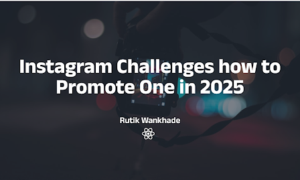Brand engagement has, for many years, served as a cornerstone of a successful marketing strategy, allowing businesses to forge lasting relationships with their customers. With the advent of the digital age, one would assume that online campaigns would be the prevailing method to engage audiences. However, as the market becomes increasingly saturated with digital advertisements, many brands are turning to a more impactful approach to break through the noise: experiential marketing.
Understanding Experiential Marketing
Experiential marketing is a marketing strategy that directly engages consumers and encourages them to participate in a brand experience. It differs from traditional marketing techniques by providing a tactile, memorable interaction that often fosters a deeper emotional connection to the brand. This method of marketing can cover a range of activities from large public events to intimate product demonstrations, all designed to create a memorable experience.
The impact of experiential marketing runs deep due to its immersive nature, often leading to word-of-mouth promotion and social sharing, exponentially increasing its reach. A successful experiential marketing campaign supports not just immediate engagement, but also long-term brand loyalty by evoking emotion and building genuine connections.
Why Experiential Marketing is Paramount for Brand Engagement
Experiential marketing is paramount in today’s marketplace as it offers a unique way to cut through the clutter of traditional and digital ads. Consumers are bombarded with messages on a daily basis, and experiential marketing provides a refreshing change. Its strength lies in providing value to the consumer, not just in terms of the product, but through an unforgettable experience.
Furthermore, experiential marketing generates authentic content that resonates with consumers. Those who partake in these experiences often share their genuine reactions and interactions through their social platforms, offering an organic extension of the brand’s reach and an endorsement that can influence others much more effectively than any conventional advertisement.
The Benefits of Experiential Marketing
Experiential marketing offers several benefits that contribute to its effectiveness in revolutionising brand engagement. It offers an opportunity for brands to showcase their personality and values, beyond what can be communicated through more traditional platforms.
This marketing approach can lead to a stronger consumer-brand connection as it allows for two-way interaction. Customers feel like they are part of the brand’s narrative, which is pivotal in fostering a sense of loyalty and trust. Additionally, it creates a buzz around a product or service, especially when the experience is shared on social media, leading to increased brand awareness and potentially viral campaigns.
Real-World Applications of Experiential Marketing
In practice, any situation where a brand can create an immersive experience can be considered experiential marketing. From pop-up shops to virtual reality experiences, the possibilities are endless. The key is to create an event or interaction that not only showcases the product or service but also entertains, educates, or provides value to the customer.
Experiential marketing is also flexible in terms of scale. Whether it’s a small, localised event targeting a niche audience or a grand, nationwide campaign, the ability to tailor the experience to the brand’s individual needs and objectives is a major advantage.
Measuring the Impact of Experiential Marketing
One might wonder how the success of such subjective experiences can be measured. While more nebulous than digital ad views or click-through rates, the metrics of experiential marketing focus on engagement quality, brand sentiment, and the likelihood of word-of-mouth recommendations. Surveys, social media engagement, and tracking subsequent consumer behaviour are all methods used to evaluate the effectiveness of an experiential campaign.
Additionally, with the integration of technology such as social media hashtags, RFID (radio-frequency identification), and immersive tech like augmented reality, collecting data from experiential marketing campaigns has become more sophisticated, allowing brands to gain insights into consumer interactions and preferences.
Challenges and Considerations
Despite its effectiveness, experiential marketing faces its own set of challenges. These events require substantial planning, creativity, and sometimes a significant budget. Ensuring a consistent brand message throughout the experience and managing the logistics can be daunting tasks.
Brands also have to consider the potential risks, such as the event failing to engage the audience or logistical mishaps that could negatively affect the brand’s image. Therefore, a well-thought-out strategy, attention to detail, and contingency planning are essential in running a successful experiential marketing campaign.
Conclusion
Experiential marketing represents a dynamic approach in the world of brand engagement. Brands that harness its power effectively can create lasting impressions and develop a loyal customer base. The trend towards more meaningful, interactive brand experiences is a testament to its growing importance.
As businesses continue to seek innovative ways to cut through the clutter and make meaningful connections with consumers, it’s clear that experiential marketing isn’t just a fleeting trend—it is a transformative strategy that is revolutionising how brands engage with their audiences.
Understanding and leveraging experiential marketing is crucial for any brand looking to remain competitive and captivating in today’s fast-paced, consumer-driven market. With creativity, careful planning, and a finger on the pulse of their consumer’s desires, brands can deliver experiences that resonate deeply and leave a lasting impact on their audience.

































